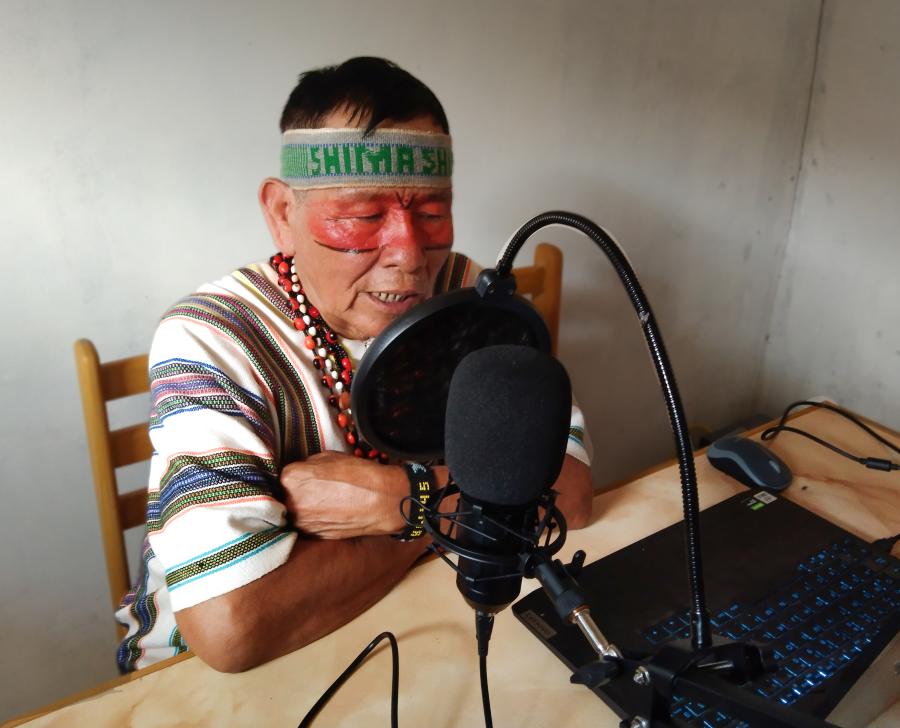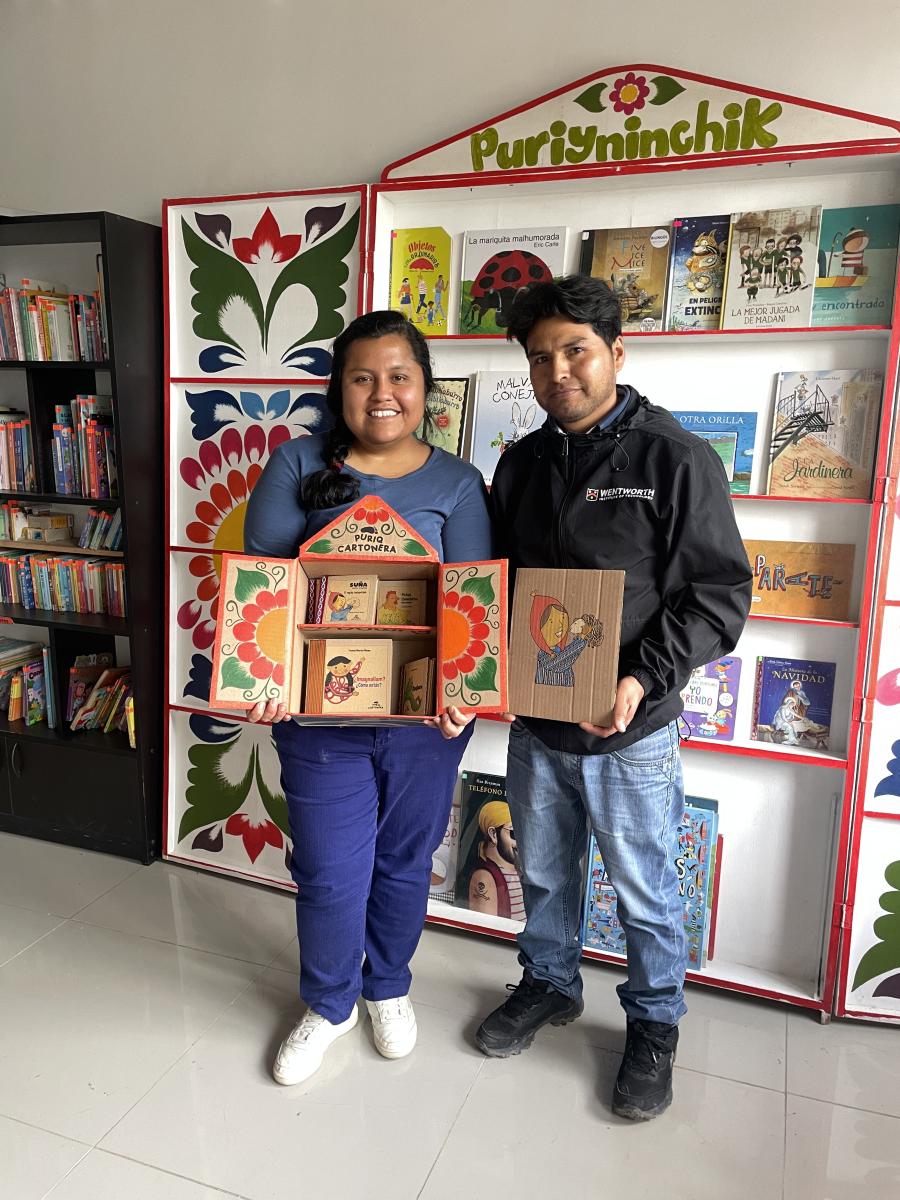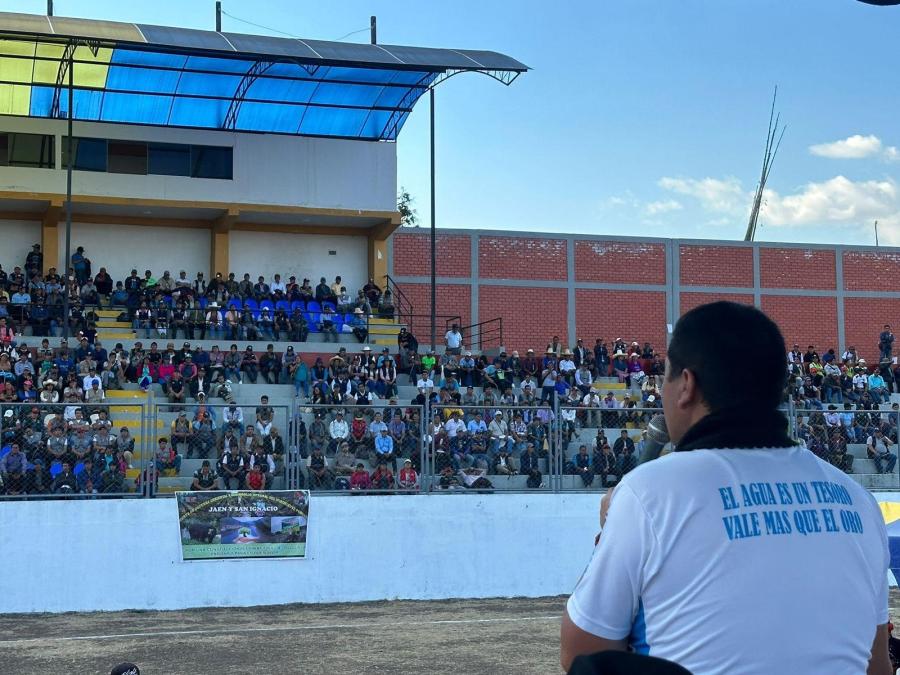Mateo Arevalo, 43, was born into a family of traditional healers, or curanderos, in the Shipibo community of San Francisco de Yarinacocha in Peru. When he decided to follow in his father's footsteps and learn curandismo, he was taught to prepare a ceremonial drink from a woody vine scientists call Banisteriopsis caapi and curanderos call "ayahuasca," a Quechua word meaning "vine of the soul." He drank the brew regularly during his two-year training period to induce physical purging and intense visions of the spirit world. It was the spirits that provided his real training and that allow him and other curanderos to diagnose and treat patients.
While Arevalo's forefathers put such knowledge to local use, generally treating their neighbors on a pro bono basis, Arevalo is proud to apply it to a wider audience. When foreigners started showing up in San Francisco about 10 years ago seeking the hallucinogen for healing, enlightenment, or a good trip, he took advantage of the opportunity to earn extra income. He now leads posh ayahuasca retreats in jungle lodges for foreigners, and hosts shamanism students in his home for three- or six-month courses.
"I am an innovator, adding to my ancestral knowledge," he explains. "We, the Shipibos, are like any other human community -- we need to grow and change. We can't just stay the same so that the tourists can stare at the naked Indians in feathers and the anthropologists can treat us like a living museum." Arevalo's innovations let him earn $200 per month from shamanism students and $30 per person for one-time ceremonies while most of his neighbors hawk handicrafts for pennies. And he is not the only shaman to bring in such sums. Ayahuasca has shown itself capable of summoning more than visions and spirits -- it also calls an ever-growing number of new-agers and thrillseekers willing to pay $30-$50 for a night's work. Ayahuasca ceremonies can be purchased in most major tourist destinations in Peru, and numerous jungle lodges now offer ceremonies or retreats, the latter costing in the neighborhood of $700-$1,500 a week.
But ayahuasca's new marketability has brought traditional healing to a dangerous crossroads. Tourist dollars could allow shamans to support themselves while continuing to treat their neighbors for little or nothing, but it could just as easily allow a privileged few to abandon their communities for a more affluent life in tourist towns or jungle lodges.
It is ironic that even a decade ago the main threat to traditional healing was lack of interest. Traditional shamanism promised little in the way of material rewards to young Shipibos all too aware of the need for jobs that pay cash. Leslie Taylor, an American specialist in rainforest plants, says that only a minority of shamans she met in her trips to the Amazon had apprentices. "A lot of the shamans didn't have apprentices because [traditional healing] was considered old knowledge, and the kids wanted what was new," she says. "They wanted what the outsiders had, what was in the city: the radios, the colored flip-flops. They didn't want to stay in the jungle and learn traditional medicine when Western pharmaceuticals seemed to work much faster."
Arevalo agrees that the young were never interested in his work -- until now. These days, he receives many requests for training from young Shipibos who see the possibilities in a bottle of ayahuasca. Interest in healing, on the other hand, is still on the wane. "The young who ask me to teach them do not want to be curanderos," said Arevalo, who insists that his work with tourists does not interfere with his commitment to the health of the community. "They are only interested in giving ayahuasca to the tourists."
The problem is not innovation per se. It is that once a shaman has innovated, a whole new world opens to him, one that often separates him from his community. Antonio Muñoz hopes to carry tradition into modernity. The 40-year-old shaman learned traditional healing from his father, but never practiced because, as he says, "to be a traditional doctor in the village is to live in the worst possible poverty." He moved to Lima, where he met psychotherapist Pio Vucetich. The two now offer therapy in which patients take ayahuasca as a tool for analysis and as a way to confront their fears and traumas. "My work is much more sophisticated than that of other curanderos," he says. "In traditional healing, the shaman took the ayahuasca to acquire the powers of the plants: to diagnose the illness and discover a cure. But how much more effective will it be if the patient takes the medicine himself? I give ayahuasca like any other doctor gives a prescription." Muñoz, like Arevalo, considers his work an innovation that combines the best of the old with the best of the new. He thinks those who don't incorporate outside elements into their healing are hopelessly stuck in the past. "Other curanderos need to learn from the science of psychotherapy to better treat their patients," he says. "We need to advance, to offer our alternative healing to the whole world." Even so, he himself does not work with members of his community because he finds there is no demand for his "sophisticated" technique in San Francisco. He spends most of his time treating his regular patients in Lima, or wealthy Peruvians or foreigners on special week-long sessions (cost, $500) in San Francisco. Why should he stay in the village, argues Muñoz, when there are so many who appreciate his technique in the cities? The question arises: what will happen to the sick in the communities if the shamans are all at international ayahuasca conventions?
Even if practitioners of traditional medicine do move away from healing and into tourism, it would seem at first glance that ayahuasca tourism can, at the very least, help to preserve a tradition that might otherwise be forgotten. But because foreign consumers of ayahuasca often come with romanticized images of what a South American shaman should be, shamans have an incentive to alter their discourse to fit expectations. Federica LeClerc, a French anthropologist studying the use of medicinal plants by Shipibo women, says that this is already a common phenomenon, and one that she considers to bring some positive results. "The Shipibos are very assimilated," says LeClerc. "The healers use the Bible, which isn't `really' part of their culture, but for them, it's as traditional as anything else. Then foreigners come, only looking for the natural, and the shamans change what they're saying to please them. So in some ways, tourism is bringing about a recovery of the past." At the same time, new foreign elements are becoming a part of the practice of some shamans. The Lima-based organization Ayahuasca-Wasi, for example, offers week-long experimental seminars in "Amazonian Shamanism" which also include meditation and "Tibetan Philosophy centered on Impermanence." Arevalo has found the need to incorporate such ideas to please his customers. He feels, however, that this syncretism is part of his human right to increase his knowledge and that it is a positive exchange of information between cultures.
One foreign element that no one appreciates, however, is outsides' desire to capitalize on interest in ayahuasca without providing any benefits to the community. The most egregious example is the 1986 U.S. patent on ayahuasca by an American pharmacology student. Under pressure from indigenous groups, the U.S. Patent and Trademark Office in 1999 rejected the patent, but the Committee for International Environmental Law, which represented the indigenous groups, argues that the patent was overturned on a narrow technicality that does not provide sufficient protection of indigenous groups' biological knowledge.
In addition to concerns over compensation for their intellectual property, the patent's challengers warned that removing the plant from its traditional role could have devastating results, citing the existing gulf between the traditional use of the coca leaf in the Andes and the abuse of cocaine in the North. Just which adaptations and innovations are appropriate is a matter of considerable debate. The older generation of shamans in San Francisco, those who continue to heal their neighbors (or at least learned to do so, even if it no longer fits easily into their schedules), unanimously found ayahuasca-selling by those who do not heal inappropriate. Muñoz, who does not give ayahuasca recreationally, considers any ayahuasca tourism without a healing element to be a misuse. "If you go to the doctor, it's because you're sick," he said. "But sadly, in our country curanderos give ayahuasca to any tourist who asks for it. Ayahuasca should not be used as a recreational drug."
Taylor argues that as more and more people from the North seek out natural remedies to physical ailments, some profit-seeking shamans may sham "medical" treatments, which she considers not only inappropriate, but dangerous. "I met a woman who had all kinds of health problems -- she was a year out of a kidney transplant and could barely walk," she says. "Ayahuasca is incredibly hard on the body, especially the liver and kidneys, and this is why in traditional healing it is the shaman who takes ayahuasca, not the patient. But this woman was in contact with a shaman who wanted to give her ayahuasca in a healing ceremony. To give ayahuasca to someone that sick would have been criminal."
Straddling the past and the future is Rodolfo Valles, one of the rare young Shipibos learning curandismo in San Francisco. Throughout his life he has seen his father curing members of his community free of charge. Now, at 19, he has begun the fasting and ayahuasca-induced training sessions that will culminate in his first healing, which he hopes he will achieve within a year. He plans to earn the money he needs to buy that which the jungle does not provide by teaching languages in a nearby mestizo town, and thinks any shaman who charges for his services is a fraud. Yet when asked if he would do ceremonies for tourists if the opportunity arose, he demonstrates conflicted feelings. "It makes me ashamed when shamans charge the tourists for their ceremonies," Valles says. "But if people want to know about our reality and about Shipibo culture, I want to show them." He plans to get around his moral qualms by adopting the technique of many shamans: requesting a voluntary donation rather than charging a set fee. Furthermore, he insists that his primary concern will always be the sick in his community. "I want to be a shaman because I want to help people," he says. "I see so many needs in my community, so many sick people who can't afford medicine at the pharmacy."
The question remains as to what Valles will do once the opportunity to work with foreigners does arrive. It is a poignant question, for as Arevalo said, why shouldn't a shaman innovate? Why shouldn't he profit materially from his knowledge? If Valles is like the rest of the shamans of San Francisco, he will say yes to the foreigners. And hopefully he will fulfill his dream of continuing to say yes to his neighbors. If shamans are too busy entertaining tourists to help their communities, one can't say that a tradition has been preserved. It will have mutated into an empty commercial endeavor that does little to preserve Shipibo heritage or help the community as a whole.
References & further reading
Interviews (all interviews took place in the year 2000):
Mateo Arevalo, shaman, Pucallpa, April 2; Yarinacocha, April 12
Federica LeClerc, anthropologist, Yarinacocha, April 1
Antonio Muñoz, shaman, San Francisco de Yarinacocha, April 7
Lucio Muñoz, shaman, San Francisco de Yarinacocha, April 6
Martin Muñoz Pacalla, shaman, San Francisco de Yarinacocha, April 6
Gilber Reategui Sangama, son of mestizo shaman, Nueva Luz de Fatima, Ap. 4
Alberto Reategui Silvano, mestizo shaman, Nueva Luz de Fatima, April 5
Leslie Taylor, owner, Raintree Nutrition, Inc., Lima, April 27
Rodolfo Valles Vallera, shaman trainee, San Francisco de Yarinacocha, Ap. 11
Other resources:
Ayahuasca-Wasi Transpersonal Shamanism Research Project. www.ayahuasca-wasi.com
The Center for International Environmental Law.
SpiritQuest. www.biopark.org/sprtqu3.html
Trimble, Diane (2000, March 22). Taking Psychedelics Seriously. San Francisco Bay Guardian.
Article copyright Cultural Survival, Inc.



